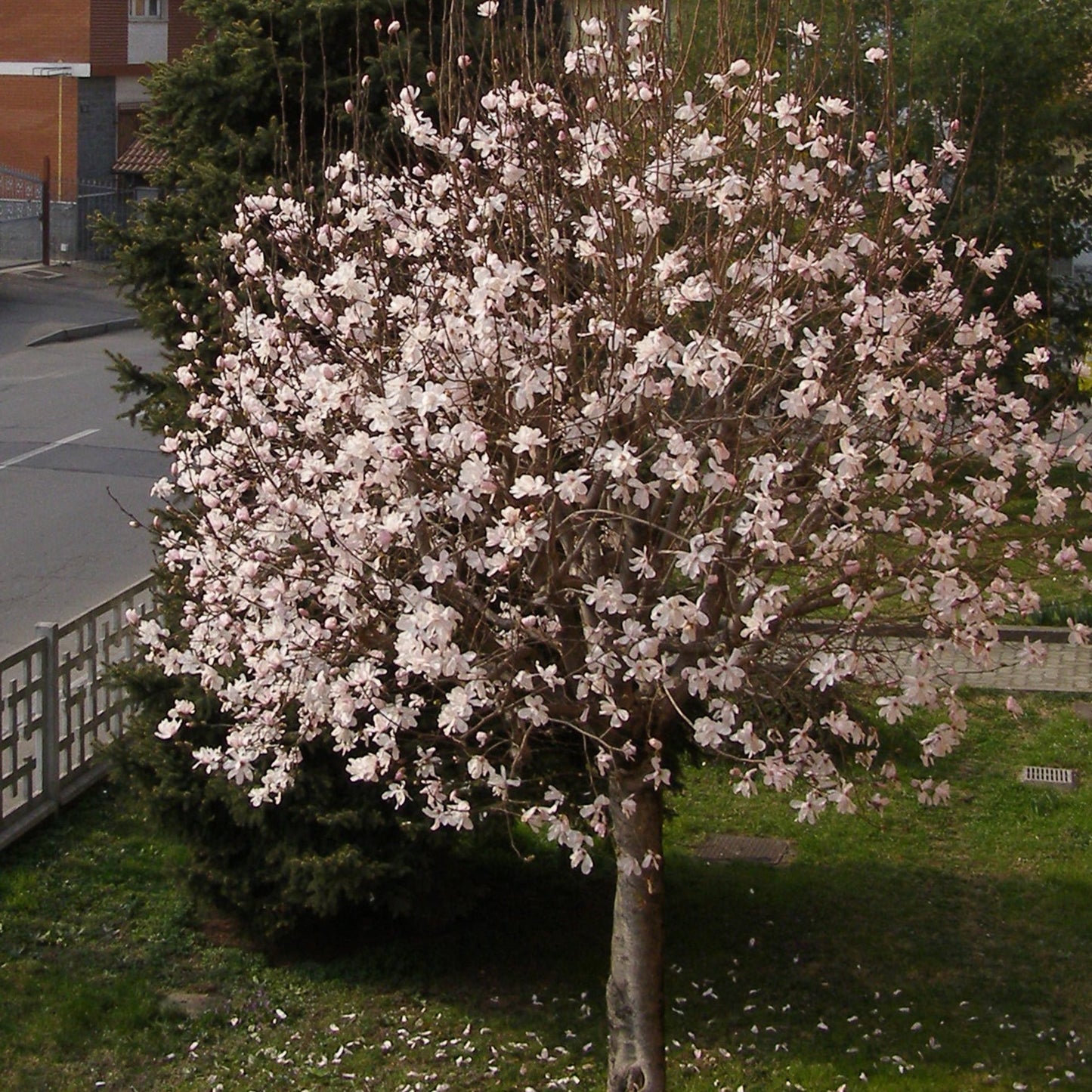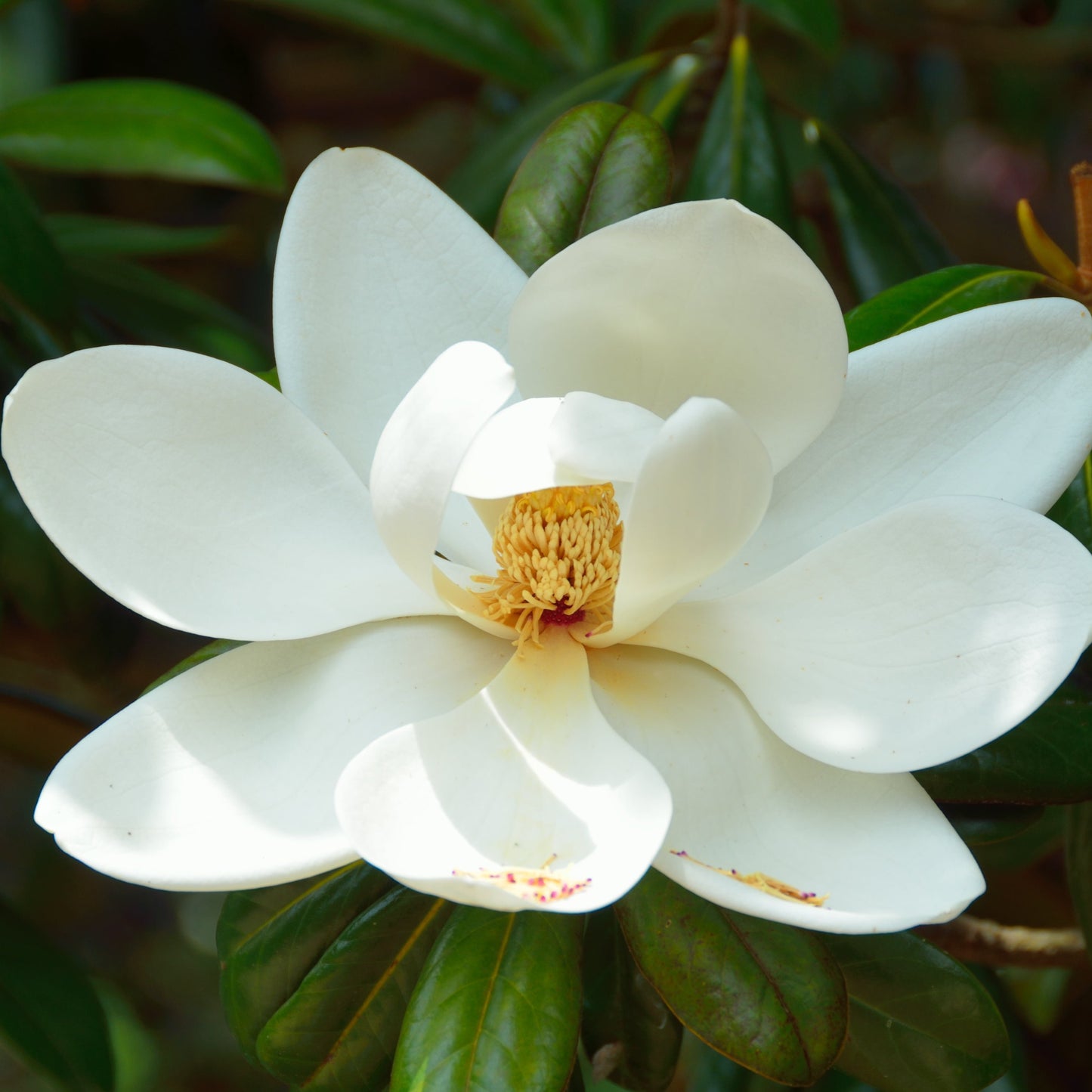Limited Quantities - Reserve Now For Fall
Sweetbay Magnolia Tree
Sweetbay Magnolia Tree
Couldn't load pickup availability
Magnolia Virginiana
Sweetbay Magnolia
The Sweetbay Magnolia Tree (Magnolia virginiana) is a graceful, multi-season ornamental tree known for its creamy white, lemon-scented blooms, semi-evergreen foliage, and smooth silver-gray bark. Native to the southeastern United States, this moderately fast-growing tree is ideal for moist soils, rain gardens, and decorative landscaping. With its pollinator-friendly flowers, wildlife value, and year-round beauty, the Sweetbay Magnolia is a must-have for both residential and naturalized settings.
Sweetbay Magnolia - Overview
| Attribute | Details |
|---|---|
| Variety | Bare Root |
| Botanical Name | Magnolia virginiana |
| Common Names | Sweetbay Magnolia, Swamp Magnolia |
| Mature Height | 15-35 feet (can reach 50 feet in southern climates) |
| Mature Width | 10-20 feet |
| Growth Rate | Moderate (1-2 feet per year) |
| Lifespan | 50-100 years |
| USDA Hardiness Zones | 5-9 |
| Sun Preference | Full sun to partial shade |
| Soil Type | Moist, well-drained, loamy, sandy, or slightly acidic soils |
| Soil pH | Slightly acidic to neutral (5.5-6.5) |
| Water Needs | Moderate to high; prefers consistent moisture but tolerates short dry periods once established |
| Flowering Season | Late spring through summer |
| Flower Color | Creamy white with a lemon fragrance |
| Fall Foliage | Glossy green leaves with silvery undersides; may remain evergreen in mild climates |
| Wildlife Attraction | Bees, butterflies, birds, and small mammals |
| Growth Habit | Upright, oval to rounded canopy; multi- or single-trunked |
| Self-Pollinating? | Yes |
| Landscape Uses | Specimen tree, rain garden, pollinator habitat, ornamental planting, wetland buffer |
| Maintenance Level | Low to moderate |
Environmental Benefits
🌼 Pollinator Support – Attracts bees, butterflies, and beneficial insects with its fragrant, long-blooming flowers.
🦜 Wildlife Habitat – Provides cover and berries for birds and small mammals, enhancing biodiversity.
💧 Ideal for Moist Sites & Rain Gardens – Naturally thrives in low-lying and wetland areas, helping manage water runoff and prevent erosion.
🌳 Air Quality & Urban Tolerance – Filters air pollutants and adapts well to urban environments with low-maintenance needs.
Pros & Cons
| Pros | Cons |
|---|---|
| Fragrant, creamy white blooms from late spring into summer | Prefers moist soils and may struggle in dry, compacted areas |
| Semi-evergreen in southern zones, offering year-round foliage | May be deciduous in colder zones (zones 5-6) |
| Attracts pollinators and provides wildlife value | Slower growth compared to some ornamental trees |
| Excellent choice for rain gardens and wetlands | Not ideal for extremely dry or alkaline soils |
| Beautiful, smooth bark and silvery leaf undersides | Can be sensitive to transplant shock if not watered consistently early on |
Planting & Care Guide
-
Spacing: Plant 10-20 feet apart for full canopy development or naturalized groupings
-
Soaking: Soak bare root in water for 6–12 hours before planting
-
Planting Depth: Dig a hole twice the width of the root system, ensuring roots sit just below soil level
-
Mulching: Apply a 2–3 inch layer of mulch to retain moisture and regulate soil temperature
-
Pruning: Prune lightly in late winter or early spring to remove any damaged or crossed branches
-
Fertilization: Use a balanced, slow-release fertilizer in spring during the first 2–3 years
-
Watering: Keep soil evenly moist, especially in the first year and during hot weather
The Sweetbay Magnolia Tree is a refined, fragrant, and wildlife-friendly addition to any landscape. With its season-long blooms, attractive foliage, and adaptability to wet soils, this native ornamental tree is perfect for home gardens, pollinator habitats, and rain gardens alike.
Share




